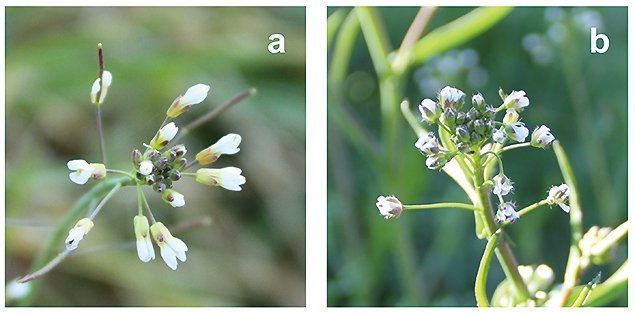Disclaimer: machine translated by DeepL which may contain errors.
Degeneration is also Evolution
Takashi Tsuchimatsu, Associate Professor, Department of Biological Sciences

In the first session of my lectures on evolutionary biology for beginners, I always deal with the theme of "What is evolution?
Generally speaking, the word "evolution" has a nuance of improvement or progress in ability or performance. On the other hand, biological evolution is defined only as "a change in the characteristics of a group of organisms through generations," without any progressive connotation. In the biological world, "degenerative" phenomena such as loss or disappearance of organs are well known, for example, fish living in dark caves have lost their eyesight. These are also gradually occurring over the course of generations and are, by definition, a type of evolution.
I have been studying the evolution of self-fertilization (self-fertilization) in plants. Self-fertilization in angiosperms is the production of seeds of the next generation with pollen and hypocotyls. Since most angiosperms are hermaphroditic, meaning that each individual produces both pollen and hypocotyls, it would seem in principle that they could all self-fertilize, but only about half of them actually do so, and the rest leave offspring through self-fertilization. Although self-fertilized seeds often grow poorly, they are thought to be advantageous from the standpoint of guaranteed reproduction because they can reliably leave seeds even in environments where there are few mating partners.
The flowers of self-fertile plants have some typical characteristics. For example, the flowers are small and do not produce much nectar. Pollen production is low. The colors and smells are lighter, and in short, the flowers are more subdued. Self-fertile plants do not need to attract pollen-carrying insects, so the petals, nectar glands, and other organs for attracting insects have probably degenerated.
Recently, we have been studying this phenomenon of flower degeneration in self-fertile plants at the genetic level. Using a whole-genome approach, we have identified the first gene that determines pollen number in Arabidopsis thaliana and named it Reduced Pollen Number 1 ( RDP1 ) (Press Release https://www.s.u-tokyo.ac.jp/ja/press/2020/6900 /). Furthermore, detailed analysis of the DNA sequence of the RDP1 gene revealed that pollen number has been reduced by natural selection in self-fertile Arabidopsis thaliana. In other words, it was advantageous to produce less pollen. Pollen production requires a certain amount of energy. It has long been believed that it is more advantageous to eliminate waste and allocate the energy to other areas, such as seeds and hypocotyls. The results of this study confirm this prediction at the genetic level.
 Self-fertilization of Arabidopsis thaliana (a) and Nazuna thaliana (b). Although it is known that self-fertilization evolved independently in each species, the floral characteristics, such as the small petals, are very similar. |
Although at first glance it may appear that pollen reduction and flower size reduction are "degenerations," they are in fact smart survival strategies for plants. In the story of the cave fish losing their eyesight mentioned at the beginning of this paper, it has become clear that a great deal of energy is required to produce the nerve tissue of the eye. Rather than the cave fish's eyes rusting away because they did not need them, it is more likely that their loss was beneficial. It is clear that whether or not to consider this as degeneration is merely an arbitrary human impression. It is only when we look at things through the lens of evolution that we can see the skillful way of life of living organisms.
Faculty of Science News welcomes essay submissions. We welcome all submissions, regardless of whether they are self-recommended or not. We especially welcome submissions from Faculty and graduate students. However, the Communications & Public Relations Committee will decide whether or not to publish your essay.
Please send your contributions to rigaku-news@adm.s.u-tokyo.ac.jp.
Published in the January 2021 issue of Faculty of Science News


